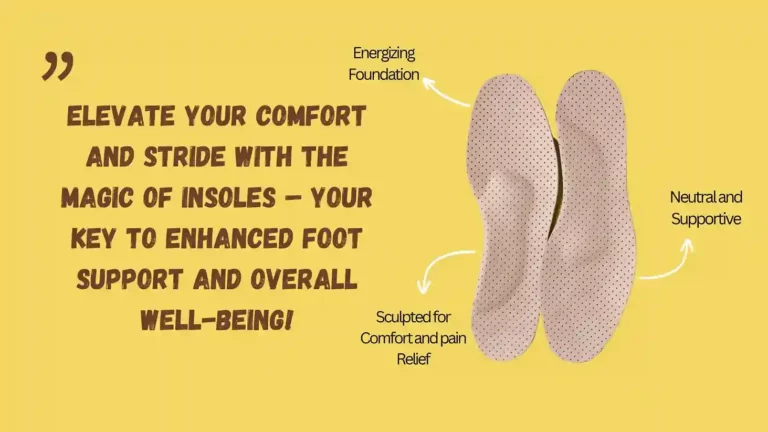Insoles: Unsung Heroes of Foot Health and FSA Eligibility
Flexible Spending Accounts (FSAs) are financial tools designed to help individuals manage healthcare expenses more efficiently. In this guide, we explore the intriguing connection between insoles and FSAs, shedding light on the importance of comfort and support in our daily lives.
Brief Overview of Flexible Spending Accounts (FSAs)
Employees can set away pre-tax money in Flexible Spending Accounts (FSAs) offered by their employers to pay for qualified medical expenditures. They provide a means to save money on healthcare costs and can be a valuable resource for various health-related needs.
Teaser about the Connection between Insoles and FSAs
Insoles, often underestimated, have a surprising link to FSAs. They play a vital role in foot health, aligning with FSA eligibility criteria, which we’ll delve into further.
Importance of Comfort and Support in Daily Life
Comfort and support are crucial for overall well-being. From daily activities to long-term health, the role of supportive footwear, particularly insoles, is often underestimated.
Understanding Flexible Spending Accounts (FSAs)
Definition and Purpose of FSAs
FSAs are accounts that enable individuals to allocate a portion of their salary, pre-tax, to cover qualified medical expenses, offering tax savings and financial flexibility.
Eligible Expenses under FSAs
- 1. Medical and Health-Related Items: FSAs cover various medical expenses, but eligibility criteria must be met.
- 2. Criteria for Eligibility: Understanding what expenses qualify under FSAs is essential to maximize the benefits.
Significance of Utilizing FSAs for Health-Related Expenses
FSAs provide a means to save on healthcare costs, encouraging proactive management of health expenses while reducing taxable income.
Significance of Utilizing FSAs for Health-Related Expenses
FSAs provide a means to save on healthcare costs, encouraging proactive management of health expenses while reducing taxable income.
Exploring Insoles and Their Impact
Introduction to Insoles
Insoles, or shoe inserts, are supportive devices placed inside shoes to enhance comfort and support.
Benefits of Using Insoles
- 1. Enhanced Comfort: Insoles provide cushioning, reducing discomfort during daily activities.
- 2. Improved Posture and Support: They aid in maintaining proper alignment, benefiting overall posture and reducing strain.
- 3. Alleviation of Foot-Related Issues: Insoles can help manage and prevent various foot problems, from arch support to alleviating plantar fasciitis.
Long-Term Health Benefits of Using Quality Insoles
1. Prevention of Foot Problems: Quality insoles can prevent common issues like plantar fasciitis, shin splints, and even knee and back pain by providing adequate support.
2.Reduction of Strain on Joints: Properly aligned feet reduce strain on knees, hips, and the lower back, potentially alleviating chronic pain associated with poor alignment.
The Intersection of Insoles and FSA Eligibility
Establishing the Connection
The correlation between insoles and FSA eligibility hinges on medical necessity and certain qualifying conditions.
Key Factors Determining FSA Eligibility for Insoles
- 1. Medical Necessity: Insoles must be medically necessary, addressing a specific foot condition or enhancing overall health.
- 2. Prescription Requirements: Some FSAs may require a prescription for reimbursement, emphasizing the medical necessity aspect.
Common Misconceptions about FSA Eligibility for Insoles
Addressing misconceptions helps individuals better understand how insoles can qualify as FSA expenses, clearing up uncertainties about their eligibility.
Prescription Insoles and FSA Compliance
Overview of Prescription Insoles
Prescription insoles are customized to address specific foot conditions, prescribed by healthcare professionals for precise support.
Role of Healthcare Professionals in FSA Approval
Healthcare providers play a pivotal role in justifying the medical necessity of prescription insoles for FSA reimbursement.
Documenting the Medical Necessity for Prescription Insoles
Thorough documentation, including diagnosis, prescription details, and medical justification, is crucial for FSA compliance.
Purchasing Insoles with FSA Funds
Steps to Utilize FSA Funds for Insole Purchases
- 1. Eligibility Confirmation: Ensure the insoles meet FSA criteria, including medical necessity and prescription requirements if necessary.
- 2. Purchase Process: Acquire insoles from eligible vendors and pay using FSA funds, keeping receipts and documentation for reimbursement.
Reimbursement Process
Submitting reimbursement claims involves providing proper documentation, adhering to FSA guidelines for a smooth reimbursement process.
Record-Keeping for FSA Documentation
Maintaining organized records, including receipts and prescriptions, is essential for FSA audits or inquiries.
Tips for Maximizing FSA Benefits
Planning FSA Expenses
Strategically plan healthcare expenses to optimize FSA utilization and savings.
Staying Informed about FSA Updates and Regulations
Keep abreast of FSA rule changes or updates to make informed financial decisions.
Consulting Healthcare Professionals for FSA-Approved Solutions
Seek guidance from medical experts to ensure FSA compliance and maximize benefits.
Insoles and Workplace Wellness
Promoting Foot Health in the Workplace
Encouraging ergonomic footwear or providing information on FSA benefits for insoles can bolster employee well-being.
Encouraging FSA Utilization for Employee Well-being
Educating employees on FSA benefits for insoles fosters a healthy work environment, prioritizing foot health.
Conclusion
Insoles, often overlooked, emerge as integral components in foot health and overall well-being. Their connection to Flexible Spending Accounts (FSAs) underscores their significance in healthcare management. By understanding the eligibility criteria and leveraging the benefits provided by FSAs, individuals can proactively address foot-related issues while maximizing their healthcare savings.
Key Takeaways
- 1. FSA Benefits: Utilize FSAs as a financial tool to cover eligible healthcare expenses, including medically necessary insoles.
- 2. Foot Health Awareness: Recognize the pivotal role of insoles in maintaining proper foot alignment, comfort, and mitigating potential health issues.
- 3. Consultation and Compliance: Seek guidance from healthcare professionals to ensure FSA compliance when considering insole purchases.
Moving Forward
Embracing the intersection of insoles and FSAs isn’t merely about financial management but signifies a commitment to proactive health measures. By continuing to prioritize foot health and exploring FSA benefits, individuals can embark on a journey towards improved comfort, posture, and overall well-being.
FAQs
Not all insoles qualify; eligibility hinges on medical necessity and meeting FSA criteria.
Consult a healthcare professional who can diagnose foot conditions and prescribe necessary insoles.
Generally, over-the-counter insoles require a prescription for FSA reimbursement, unless addressing specific medical needs.
Various conditions like plantar fasciitis, flat feet, or arthritis may qualify, contingent on medical necessity.
Typically, once per plan year, unless there’s a documented change in medical need.
While terms are used interchangeably, inserts are often generic, while insoles are more customized for support and comfort.
Custom-made insoles, prescribed for medical necessity, are generally eligible for FSA reimbursement.





